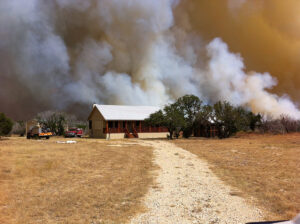Animal Science is Reaching New Horizons
- Posted by Rebecca Gimenez Husted, PhD
Over the last few months, animal science as a degree has endured some negative publicity, even mocking by bloggers and various websites. How does this affect the equine industry? Deeply. A large percentage of our large animal veterinarians, nutrition experts, horse trainers, and educators come out of this pool of students. Interestingly, there is evidence that very good faculty members are out there, and I recently met one of them.
Dr. Clay Cavinder, assistant professor of equine science at Texas A&M and came to speak at the Animal Transportation Association (ATA) International Conference in March at Vancouver. He was asked to share his cutting edge ideas for initiating a new (2011) course that is receiving high marks from his students in the Animal Science Department (the largest university animal science department in the United States, with 56 faculty and 831 undergraduates). His new “Equine Marketing and Development” course answers the requests from A&M students looking for alternate careers in the horse industry. Currently the standard responses from students are that they can be: trainer, veterinarian, educator, or owner. Awareness of alternate and interesting career options includes reaching outside of normal equine instructional and career paths into things like: disease, outbreaks and effects; liability and law; safe handling; marketing skills; emergency and disaster preparedness; or research in the equine industry.
Besides two graded exams, there are three oral presentations, field trips, and guest speakers to provide a variety of exposures to the students outside the classroom. This new course also hopes to soon fulfill the school’s requirement that students achieve three credits in an “international cultures and diversity” course.
There is strong emphasis on oral communication and presentation skills so that students feel confident for job interviews, delivering information, etc. During the inaugural course, Dr. Cavinder included a historical overview of equine transportation in his lectures and a review of modern transportation methods. (Many of his students were not aware that horses also travel on planes!) The class visited a farm that quarantines horses for international travel and discussed quarantine procedures, avoiding liabilities, shipment procedures, and the impacts on economics of the equine industry
Create a free account with TheHorse.com to view this content.
TheHorse.com is home to thousands of free articles about horse health care. In order to access some of our exclusive free content, you must be signed into TheHorse.com.
Start your free account today!
Already have an account?
and continue reading.

Written by:
Rebecca Gimenez Husted, PhD
Related Articles
Stay on top of the most recent Horse Health news with















